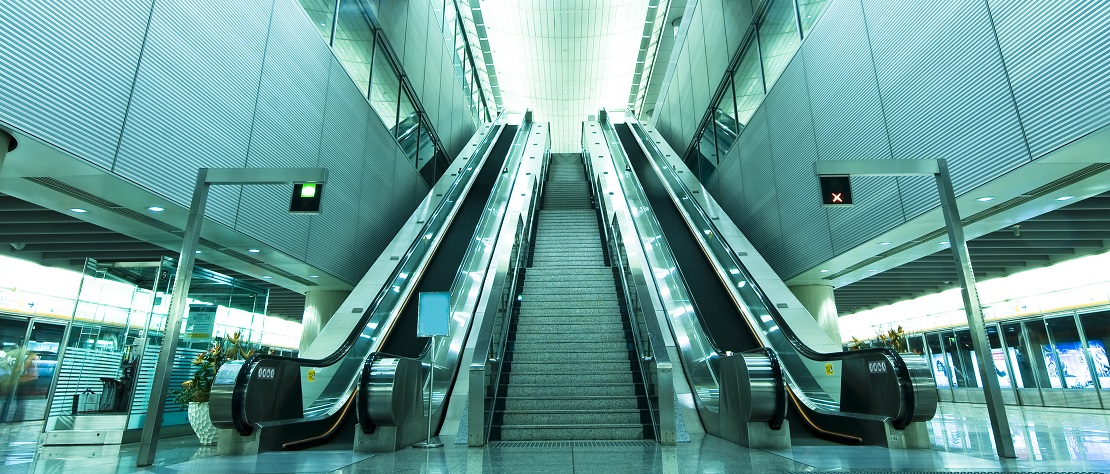
Already at the end of January, when China had 81 reported deaths, Allibaba's Taobao reported 80 million sold face masks only between January 21st and January 22nd. At JD.com, alcogel sold out abruptly and the same effect spread throughout the world and we could read about people who hoarded and even sold alcogel at usury prices. The pandemic was predicted to have positive effects on e-commerce, although there was a great deal of uncertainty mainly about the delivery of goods as a result of closures in China.
Consumer behaviour changed overnight
In March, 6 out of 10 retail and wholesale companies counted on being forced to reduce staffing in Sweden. 75,000 jobs were in danger and 160,000 could have to go down in working hours. The support packages on short-term work, rent reductions, employer fees were mutually exclusive and were crucial in mitigating the crisis's progress.
Svensk handel conducted a survey on March 22-24, where it was found that in the wholesale purchase trade, 28% of the companies had lost at least 60% of their sales.
Consumer behaviour changed overnight.
Postnord's e-commerce report, the e-barometer for May, showed a 32% increase in Swedes' e-commerce between February and March. Grocery sales increased 75% in March compared to February as a result of bunkering and fewer restaurant visits. First and foremost, there was a clear increase in the age group 65-79, where 21% stated that they bought food in March compared to only 7% in the same period last year. Pharmacy products increased during Q1 as a whole, with a not surprisingly 37%.
A few years ahead
Niklas Zeitlin at Coop believes that the e-commerce development in food will have been accelerated by about 2 years after the Corona crisis subsided. Coop aimed to have 3-4 times more capacity during the fall. Mathem also gives the same picture of the development and the forecast. Logistics both in terms of number of deliveries and capacity has had to be greatly expanded. They have also been picked up in their own stores to quickly scale up.
Home and do it yourself
Ikea had to close over 300 of its 430 stores globally. Many of the open department stores have had restrictions on the number of visitors and the number of visitors has dropped dramatically. Online sales have increased by 200% both since the same period last year and a few months back in the start of the pandemic. In countries where the department stores were forced to close, e-commerce has increased five-fold.
Byggmax increased sales by 22% in the first quarter 2020 compared to the same period last year. At the end of March, "home-fixing products" increased as more and more people were at home. Similar reports have been read from others in the same industry.
Effects for e-retailers
Reduced demand in stores due to restrictions makes it difficult to sell their goods. Sale does not help because people do not want or are not allowed to go to the store. As a result of this, we have seen widespread sales on e-commerce in order to get the goods sold in this way. Almost all major e-retailers have used this tool.
Many have probably been shopping online to reduce the boredom of social distance and to make it better at home when you spend so much time there.
Click and Collect stopped working because it was precisely the shops that people did not want to go to. Many quickly switched to free shipping to overcome this dilemma and the possibility of home delivery.
Many young people worry about their private finances (47%). Among the elderly, the anxiety is only 14%. More than half of Swedes avoid going to stores and this figure is more than 80% among the elderly. Almost half state that they have directed their purchases to stores in the immediate area. This is of course a huge opportunity for local trade. 40% work at home and 80% spend more leisure time at home. Acceptance for long delivery times has increased during the crisis. In April, 78% of Swedes traded online, which is the highest figure ever.
Retailers test new grips
Kjell & Company sees that some stores have lost sales, but this is offset by increased online trading. Kjell & Company's customers can now retrieve their online orders outside the store. The service is launched in 40 of the chain's stores. The service means that customers can place their order online or by phone and have the goods delivered directly in the tailgate or bicycle basket outside Kjell & Company's store.
Naturkompaniet launched a service for advice and purchases by phone. The service is offered in all 34 stores in the chain. The store's open-air experts guide the customer through the assortment, which can place an order directly and have it delivered to the post office.
For example, Winston & Elle, the fashion retailer with two stores in Sundbyberg and Stockholm, offers free personal shopping - but not in stores but via video calls. The customer makes an appointment and is called and receives 20 minutes of personal service with tips and advice.
Biltema recently launched a click and collect solution. Now the service offering has been expanded with drive in for customers who do not want to go into the department store and retrieve their order. Instead, the customer drives to the department store where the staff shows up and delivers the goods.
Several players in the grocery trade have taken new steps to facilitate food purchases for the elderly and people in risk groups. Several stores have opened in the past to allow these groups to shop alone in the store. Others have quickly launched e-commerce solutions or expanded their range of services with home deliveries. In Uppsala, Ica Nära Stabby has placed a vending machine filled with ready-made dishes, snacks and drinks outside the entrance.
What can you do now?
It is likely that some of the behavioral changes caused by the pandemic will persist when it is over. Travel has fallen by 90% according to many reports, but it is not inconceivable that there will be a lasting decline because companies have realized how well video meetings actually work.
Similarly, many consumers who have not previously tried e-commerce will continue with this when they realize how smoothly it worked.
Offensive investments in e-commerce have been high on many companies' agendas for a long time, but mainly to increase sales. An insight into the pandemic is that e-commerce should also be high on the agenda to reduce the company's risk exposure. After all, it is such a secluded channel that in times like these, it can make the difference to actually reach the customer when it is impossible through the store chain. This has probably not been the case before, possibly when it comes to expanding to a market where you do not yet have stores, but not to reach all existing customers at the store stage.
Finally, consider the following questions.
- How scalable is your e-commerce?
- Can you reach your customers via e-commerce as easily as in stores? If not, what is missing, and can this be done digitally?
- How do you do today in order for your customers to know about e-commerce being a natural channel like your stores?
